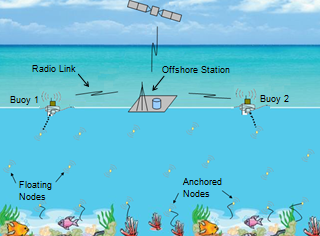Underwater acoustic communication is a technology that enables the transmission of information through sound waves in an underwater environment. This technology is crucial in many underwater applications, including submarine communication, oceanographic research, and underwater navigation.
In underwater acoustic communication, sound waves are used to transmit information between underwater devices such as sonar systems, underwater acoustic modems, and underwater acoustic transducers. The sound waves travel through the water and can be detected by receiving devices. The transmission of information using sound waves is more reliable than using other communication methods, such as radio waves, in the underwater environment because sound waves can travel long distances underwater without significant degradation.
The challenges in underwater acoustic communication include the effects of the underwater environment, such as attenuation and noise, on the transmission of sound waves. Additionally, the speed of sound in water is much slower than in air, and the depth of the water also affects the speed of sound. To overcome these challenges, various signal processing techniques, such as error correction coding and signal compression, are used to improve the reliability and efficiency of underwater acoustic communication systems.
What is Underwater Acoustic Communication?
Underwater acoustic communication is a method of transmitting information between underwater devices using sound waves. This technology is used in a variety of underwater applications, including oceanographic research, underwater navigation, and submarine communication. Unlike traditional wireless communication methods, such as radio waves, that cannot be used underwater because they are absorbed or scattered by the water, sound waves can travel long distances underwater with relatively little degradation.
The process of underwater acoustic communication starts with the transmission of information from a source device, such as a sonar system or underwater acoustic modem, using an underwater acoustic transducer. The transducer converts the information into sound waves, which then travel through the water to the receiving device. At the receiving device, an underwater acoustic transducer converts the received sound waves back into the original information.
The speed of sound in water is much slower than in air, and the depth of the water also affects the speed of sound. These factors, as well as the effects of the underwater environment, such as noise and attenuation, can impact the transmission of sound waves in underwater acoustic communication. To overcome these challenges, various signal processing techniques, such as error correction coding, signal compression, and modulation, are used to improve the reliability and efficiency of the communication system.
Underwater acoustic communication is a crucial technology for many underwater applications and has a wide range of potential applications, including deep-sea exploration, underwater surveillance, and the development of underwater sensor networks. The continued advancement of underwater acoustic communication technology will enable new and innovative underwater applications and further our understanding of the underwater world.
Working
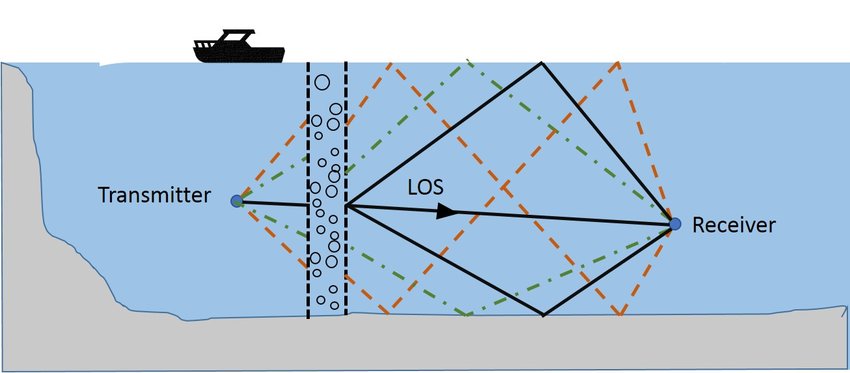
Underwater acoustic communication is a method of transmitting information between underwater devices using sound waves. The basic working of an underwater acoustic communication system involves several key components, including an underwater acoustic transducer, a sound wave generator, and a sound wave receiver.
- Transduction: The underwater acoustic transducer is the component that converts the information to be transmitted into sound waves and vice versa. This transduction process involves the conversion of electrical signals representing the information into sound waves and the conversion of the received sound waves back into electrical signals.
- Transmission: The sound waves generated by the underwater acoustic transducer are then transmitted through the water to the receiving device. The speed of sound in water is much slower than in air, and the depth of the water also affects the speed of sound. To overcome these challenges, various signal processing techniques, such as error correction coding, signal compression, and modulation, are used to improve the reliability and efficiency of the communication system.
- Reception: At the receiving device, the received sound waves are then converted back into electrical signals by the underwater acoustic transducer. The electrical signals are then processed to extract the original information.
- Error Correction: To mitigate the effects of the underwater environment, such as noise and attenuation, on the transmission of sound waves, various error correction techniques are used to improve the reliability of the communication system. These techniques include error correction coding, forward error correction, and automatic repeat request (ARQ) protocols.
In summary, the working of an underwater acoustic communication system involves the transduction of information into sound waves, the transmission of the sound waves through the water to the receiving device, the reception of the sound waves and the conversion back into electrical signals, and the error correction of the received information to ensure reliable and accurate communication. The continued advancement of underwater acoustic communication technology will enable new and innovative underwater applications and further our understanding of the underwater world.
Uses and Applications
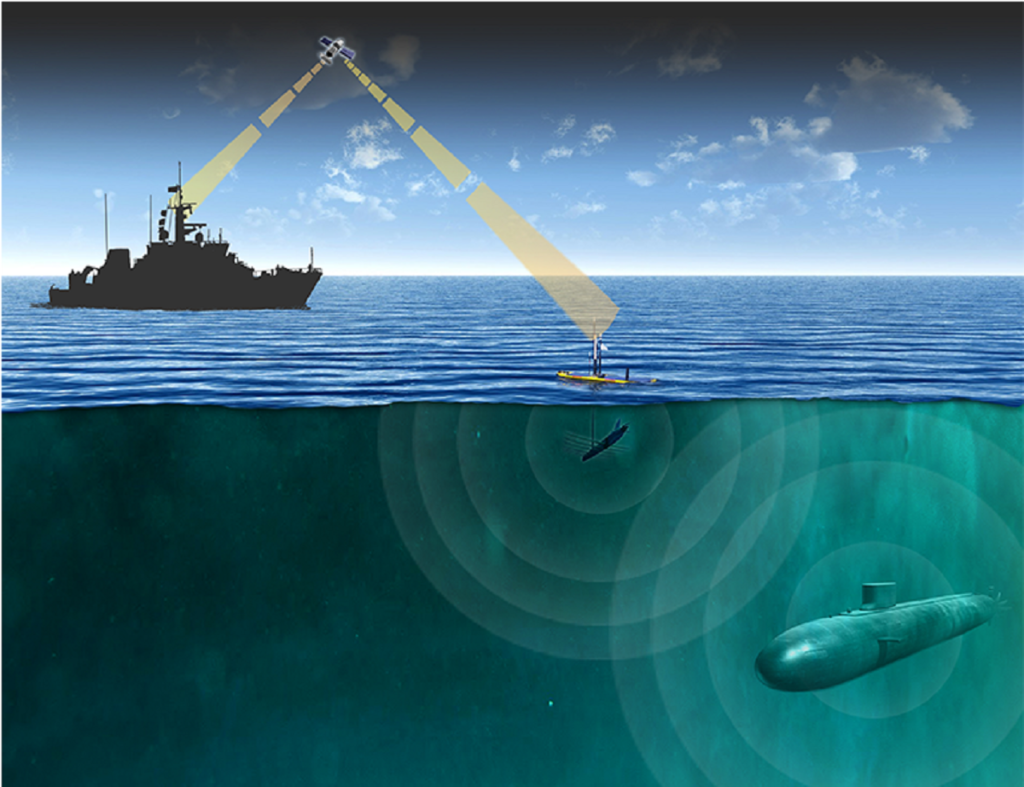
Underwater acoustic communication is a technology that has a wide range of applications in various fields, including oceanography, underwater navigation, and military and defense. Some of the key uses and applications of underwater acoustic communication are described below in detail.
- Oceanographic Research: Underwater acoustic communication technology is widely used in oceanographic research, including studies of the ocean’s physical and biological characteristics, ocean currents, and underwater geological structures. Researchers use underwater acoustic communication systems to transmit data and images from underwater instruments and vehicles to the surface, where the data can be analyzed and used to better understand the ocean’s characteristics and behavior.
- Underwater Navigation: Underwater acoustic communication technology is also used in underwater navigation, including the positioning and tracking of underwater vehicles, such as autonomous underwater vehicles (AUVs) and remotely operated vehicles (ROVs). Underwater acoustic communication systems provide the means for these vehicles to communicate with the surface and with other underwater devices, allowing for more precise navigation and control.
- Submarine Communication: Underwater acoustic communication technology is critical for submarine communication, as it allows submarines to transmit and receive information while underwater. Submarines use underwater acoustic communication systems to communicate with other submarines and with ships on the surface, and to receive navigational information and guidance.
- Military and Defense: Underwater acoustic communication technology is used in military and defense applications, including underwater surveillance, anti-submarine warfare, and mine detection and clearance. Underwater acoustic communication systems are used to transmit and receive information from underwater sensors and instruments, providing critical intelligence and situational awareness to military and defense organizations.
- Underwater Sensor Networks: Underwater acoustic communication technology is also used in the development of underwater sensor networks, which are used to monitor underwater environments, detect and track underwater objects, and provide real-time information about the underwater environment. Underwater acoustic communication systems are used to transmit data and control signals between the underwater sensors and the surface, allowing for the creation of large-scale underwater sensor networks.
These are just a few examples of the many uses and applications of underwater acoustic communication technology. With continued advancements in this field, the potential for new and innovative underwater applications will continue to grow, furthering our understanding of the underwater world and enabling new capabilities in a variety of fields.
Market Value and Demand
The market value and demand for underwater acoustic communication technology has been growing steadily in recent years, driven by increasing demand for oceanographic research, underwater navigation, and military and defense applications.
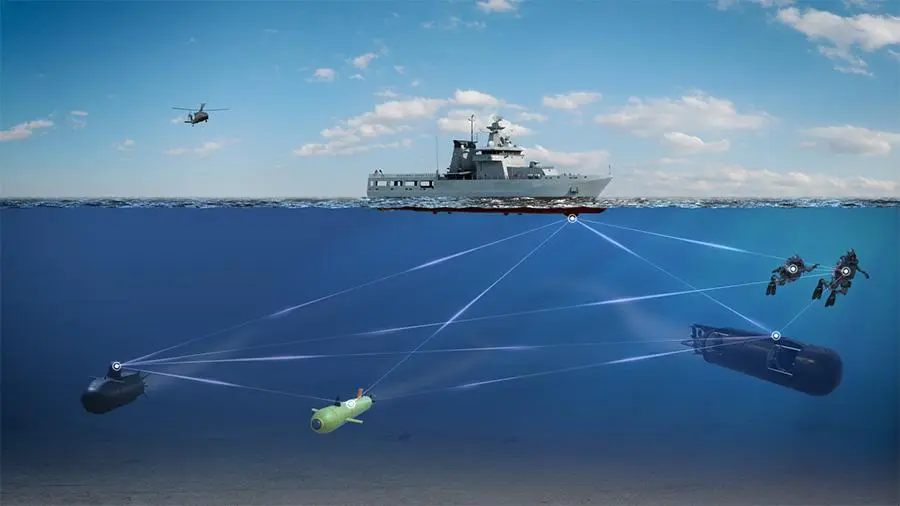
- Market Value: According to a report by MarketsandMarkets, the global market for underwater acoustic communication technology is expected to reach USD 1.84 billion by 2026, growing at a compound annual growth rate (CAGR) of 6.6% from 2021 to 2026. The increasing demand for underwater communication technology in various industries, including oil and gas, defense, and scientific research, is driving the growth of the market.
- Market Demand: The demand for underwater acoustic communication technology is driven by the increasing need for reliable and efficient communication in underwater environments. In oceanographic research, for example, researchers require real-time data transmission from underwater instruments and vehicles, and underwater acoustic communication technology provides a means for transmitting this data to the surface. In military and defense applications, underwater acoustic communication technology is critical for underwater surveillance, anti-submarine warfare, and mine detection and clearance.
- Market Players: The underwater acoustic communication technology market is highly competitive, with a large number of market players offering a wide range of products and services. Some of the key players in the market include Kongsberg Maritime, Atlas Elektronik, Sonardyne International Ltd., EdgeTech, Teledyne Marine, and OceanServer Technology. These companies are investing in research and development to improve the performance and capabilities of their underwater acoustic communication products, driving innovation and growth in the market.
In conclusion, the market value and demand for underwater acoustic communication technology is growing, driven by increasing demand in various industries and the need for reliable and efficient communication in underwater environments. The continued growth of the market is expected to lead to new and innovative underwater communication applications, furthering our understanding of the underwater world and enabling new capabilities in a variety of fields.
Conclusion
In conclusion, underwater acoustic communication technology is a critical tool for underwater communication and provides a means for transmitting information in underwater environments. The technology has a wide range of uses and applications, including oceanographic research, underwater navigation, submarine communication, military and defense, and underwater sensor networks. The market value and demand for underwater acoustic communication technology is growing, driven by increasing demand in various industries and the need for reliable and efficient communication in underwater environments.
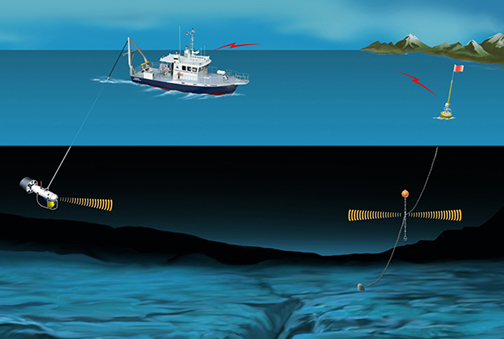
The underwater acoustic communication market is highly competitive, with a large number of market players offering a wide range of products and services. Companies in the market are investing in research and development to improve the performance and capabilities of their underwater acoustic communication products, driving innovation and growth in the market. The continued growth of the market is expected to lead to new and innovative underwater communication applications, furthering our understanding of the underwater world and enabling new capabilities in a variety of fields.
Overall, underwater acoustic communication technology is a crucial tool for underwater communication and plays a critical role in a wide range of industries and applications. With continued advancements in the field, the potential for new and innovative underwater communication applications will continue to grow, providing new opportunities for exploration and discovery in the underwater world.







